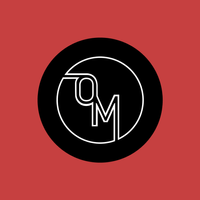Black Women’s Beauty is Pain and Patriarchal Capitalism is the Perpetrator X Jessica Roye
Beauty is a commodity, something we’re told we can buy access to. Through cosmetics, fashion, and surgery we can tweak, lighten, or dissolve our way into meeting the standard then gaining social and financial clout, as well as the many other privileges being seen as beautiful can provide. The social currency of beauty is built so that only a select few can benefit fully from it. Under capitalism, beauty standards are based on imperial ideals and religious morals and can be used as a tool to keep sexism alive and well. The feminist school of thought is that having woman spend their time, money and energy chasing an unattainable beauty standard is in the patriarchy’s best interest. And as with every part of the patriarchy, this issue is even more prevalent for women of colour, where women of colour buy nine times the number of products as their White women counterparts. Call it a distraction or disempowerment keeping us unsatisfied with our appearance means women are subordinate to men, as we are preoccupied with our appearance, and chasing an ideal that was created through the male gaze. Through aesthetic assimilation and mimicry, marginalised women are encouraged to peruse a definition of beauty that was not created with us in mind. With beauty being built on fatphobia, racism, transphobia, colourism, ableism and the exclusion of other marginalised identities there will always be those inherently seen as beautiful, those who can achieve beauty through assimilation and those who can’t- but should spend money to achieve beauty because it’s a woman moral obligation to be beautiful! So, those from marginalised communities must work harder to gain access to beauty, this could be why women of colour purchase nine times the number of beauty products as White women (Brown-West, 2021). Every woman has heard some variation of ‘beauty is pain’. Beauty is often linked with physical and mental pain and the idea that we must suffer for beauty, with the promise that beauty can provide ‘freedom’, historically through marriage currently through capital. Many beauty rituals cause pain or discomfort waxing and threading for example. But there are also beauty products that cause irreversible harm, chemical hair straighteners and skin lighteners for example. Both straight hair and light skin are Eurocentric features celebrated for being beautiful, chemical straighteners and skin lighteners are mostly used by Black women and often from a young age. The clean beauty movement is currently growing as consumers demand more from brands and are more aware of harsh and dangerous chemicals being used in skincare, cosmetics, and haircare. Research by the National Institute of Health showed that women aged 35-74 who used chemical relaxers were at double risk of uterine cancer as opposed to those who don’t. Chemicals found in these products can also cause early puberty, breast cancer, and premature births in pregnant women. The same chemicals can also be found in leave-in conditioners, hair oils and other products targeted at Black hair. Despite that clean beauty items are more important to Black women than White women, there is still a gap in the clean products available to Black women and White women. Although clean products are available for women of colour there isn’t always the affordability of time and money to find these products. In Tobi Oredein’s 2017 Ted Talk, she critiques how the beauty industry has devalued Black women. Through lack of representation, treatment of Black customers and shade diversity. Her solution is diversifying workplaces right through to senior positions. By investing in, training, and hiring more Black scientists, researchers, journalists to write on these issues and advertising teams we can bring Black beauty to the front. Taking Black woman’s pain and health issues seriously has historically and presently been a challenge. Whilst more Black scientists and researchers will forever be encouraged, we need a shift in general attitudes towards Black woman's pain and health. The rate that Black/mixed Black women die in childbirth as opposed to White women is 4 to 1. Black women are often not believed when they express feelings of pain to healthcare professionals. Whilst I don’t agree with banning relaxers, more so wish for a society where anyone can express the versatility of their hair without putting their health at risk, legislation may help in some countries. In the UK many common ingredients of skin lightening creams are banned unless prescribed by a doctor. However, legislation does not end the use of these products and often means they become even less regulated if sold under other names or harder to get hold of. When I think of the most readily available Black hair care brands to me in the UK, a quick google of the brand followed by harmful ingredients showed almost every brand had harmful and carcinogenic ingredients. Followed by a google of who owned these companies and I figured the billionaire bald White men that come up probably are not losing sleep about these products being harmful. Beauty is causing harm. But as a tool of patriarchy harm to women, especially marginalised women, means it’s working exactly as it was intended. Black and Asian people not having access to safe beauty products and clean beauty is structural racism working exactly as it was intended. For the White men billionaires who own these brands and for the Black women who can’t afford clean beauty, capitalism is working exactly as it was intended.

